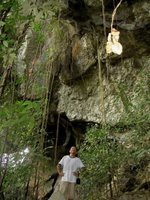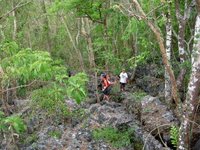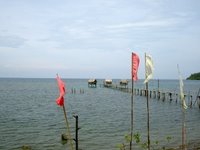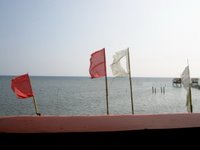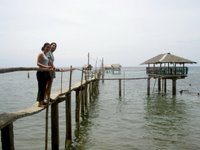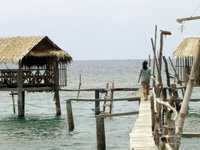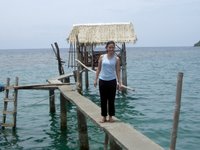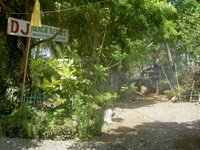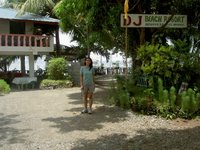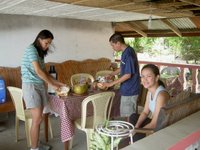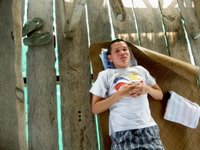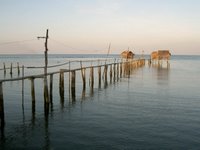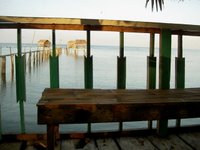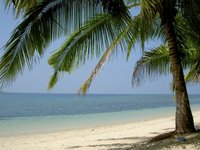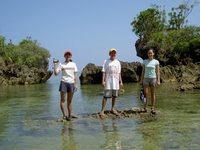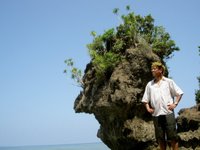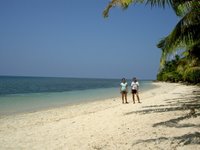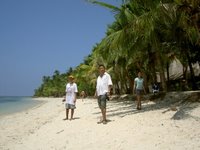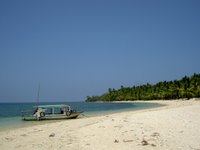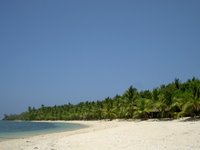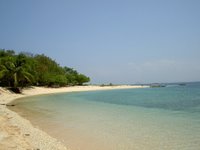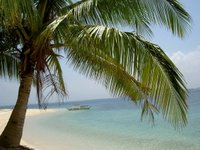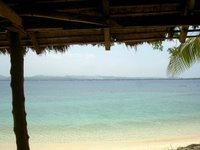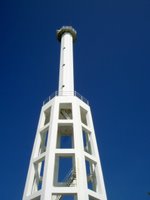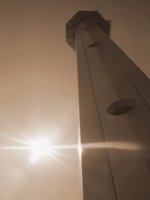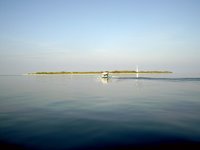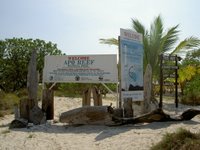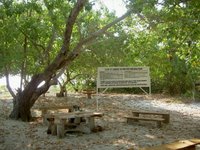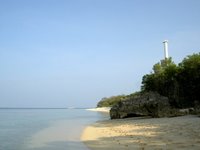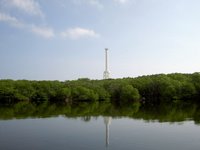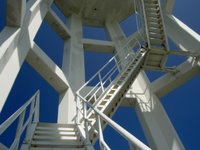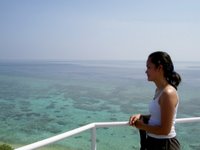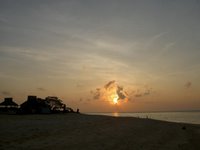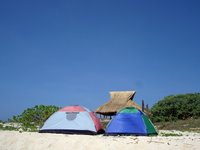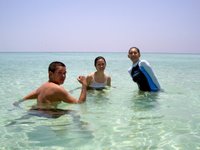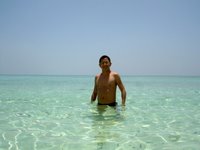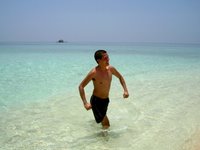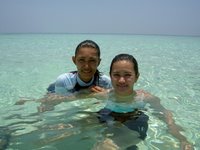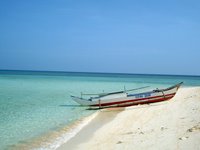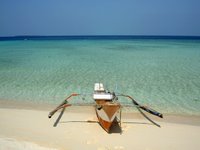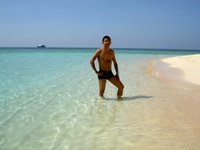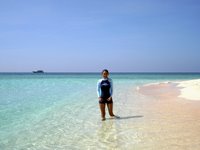The Town
Sablayan · A First Class Town in Occidental Mindoro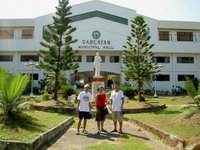
Behind us is the Sablayan Municipal Hall. It is really a neat and beautiful municipal building. I've seen others but this one is quite neat.
About The Town
Sablayan was derived from the word Sablay, a Visayan term meaning wave convergence. In the early times, the very location of the town was where the waves from North and South China Sea meet, hence, the name Sablay that later became Sablayan.
Mangyans were the ancient aborigines of Mindoro. They were believed to be of Malayan origin. They were joined in by natives from neighboring islands–mostly Panayeños led by the TANUNGAN (venerable elderly members of a tribe who acquired the mantle age and wisdom over all other members of the tribe) during the second Spanish settlement established by Legaspi. Years later, more arrived who, unlike the first migrants, were already converted Christians; and sometime in 1861 migrants increased in population.
The means of livelihood was agriculture, fishing and hunting. Women though were engaged in weaving sigurang, a fiber derived from buri/nipa leaves.
Sablayan then was often subject to raids by Muslim pirates and slave traders so a wooden tower was built–watched round the clock to guard against approaching raiders. This alarm system was augmented in 1896, when four bells of varied sizes–believed to have been manufactured in Spain–arrived from Manila. These bells rang musical chimes.
Upon the arrival of a Spanish priest, a church had to be built. Men, women and children were conscripted to work on it. After ten years of backbreaking arduous toil, the church was made functional sometime in 1896. This church is now in ruins, its bells gone but the biggest cannon standstill atop a small hill near the lighthouse of Parola. The church was abandoned when the town proper was moved to Buenavista.
The Second Spanish Settlement established by Legaspi in Panay Island in 1565 led to the occupation of Iling Island just of the Southwestern coast of Mindoro and later of Lubang Island in 1569.
As the Spanish influence and powers became more deeply rooted in Panay Island, the natives began to experience the growing oppression of the colonizers–rebellious Panayeños began to look towards the sea. When the Spaniards began to recruit natives into fighting for the conquest of other areas, some Panayeños thought it better to transfer to other places–hence, waves of Panayeños landed in Sablayan and settled there.
In 1901, the first American arrived in Sablayan. Due to the outbreak of Fil-American war, Americans burned the town in 1903. It took years before Sablayan was rebuilt.
Sablayan was already a pueblo (town) under the Spaniards when the Americans came. However, when the American Government took over–owing perhaps to its proximity and accessibility to the National Government–it was converted into a full pledge municipality on January 04, 1906 by virtue of Act No. 1820 of the Philippine Commission.
Note • This write-up was taken from the official Local Government Unit Profile of Sablayan. For further details you may visit the following URL: elgu2.ncc.gov.ph/sablayan
About Our Experience
We went around the town. It was small but neat. And I mean neat despite the heat. The main public form of transportation is tricycle. You will see and hear lots of it, well somehow they are not really that annoying.
Each passenger fare costs 7 pesos. We were told that there was an unwritten mandate from the local government that they are not supposed to overcharge tourists, whether local or foreign, that is to encourage them to come back. Well, there was only one instance, we were charged 8 pesos per passenger. But I willingly let it go. Not really an issue.
The wet market is very clean and more importantly not SMELLY. The town people are friendly. There is this one place the we usually have our dinner whenever we finish our trip late - the Kainan sa Kubo (which is translated Eatery at the Hut) restaurant. Inside this restaurant, there are small huts for two. Yes, for dating purposes.
And we also noticed that they have no fast-food! Yes! Not one commercial fast-food! That is really good! In my opinion, the Town should keep them away!
My overall rate? From the scale of 1 to 10, I give 9. The only issue is that we were not able to buy cold mineral/distilled drinking water!
For me the Sablayan Town experience is something next to Palawan's Puerto Princessa. Sablayanos have something to be really proud of!
How to Get There
I can only provide you with instructions if you're coming from Manila. Follow the steps below:
[1.] Take a provincial bus line, Jam or BLTB, going to Batangas Pier. Fare costs 154 pesos, travel time is less than 3 hours if you travel late at night.
[2.] Upon arrival at the Pier, go inside the pier station and proceed to the ticketing station of the Montenegro Shipping Lines and pay 160 pesos for the ticket fare going to Abra de Ilog. Travel time is about 3 hours.
Schedule of trips is as follows: 4.00 am, 12.00 pm, and 4.00 pm. These are departure time. Boarding time is at least 30 minutes before departure.
[3.] Upon arriving Abra de Ilog, find a van that will go to Sablayan. It is very important to be fast, because you might be left behind. Fare costs 210 pesos. Travel time is about 3 hours. By the way, the road to Sablayan is rough.
···························································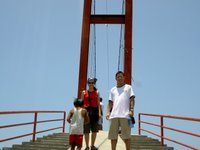
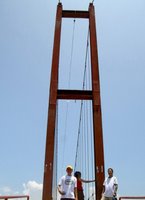

These photos were taken at the Golden Gate-like bridge just near the Sablayan Mall (actually a wet market). I really like the way it swayed when we crossed it and only people and motorbikes can pass. A photo of the mall was taken from bridge.
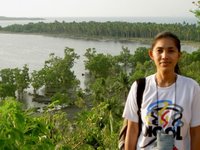
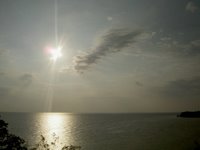
These photos were taken from the Parola Park. I wasn't able to take a photo of the old parola (lighthouse) due to low battery load, however I managed to take a scene of the mangrove situated below with a wonderful and lovely lady. And finally, a photo of the Sablayan Sunset viewed from the parola hill! Beautiful indeed!

